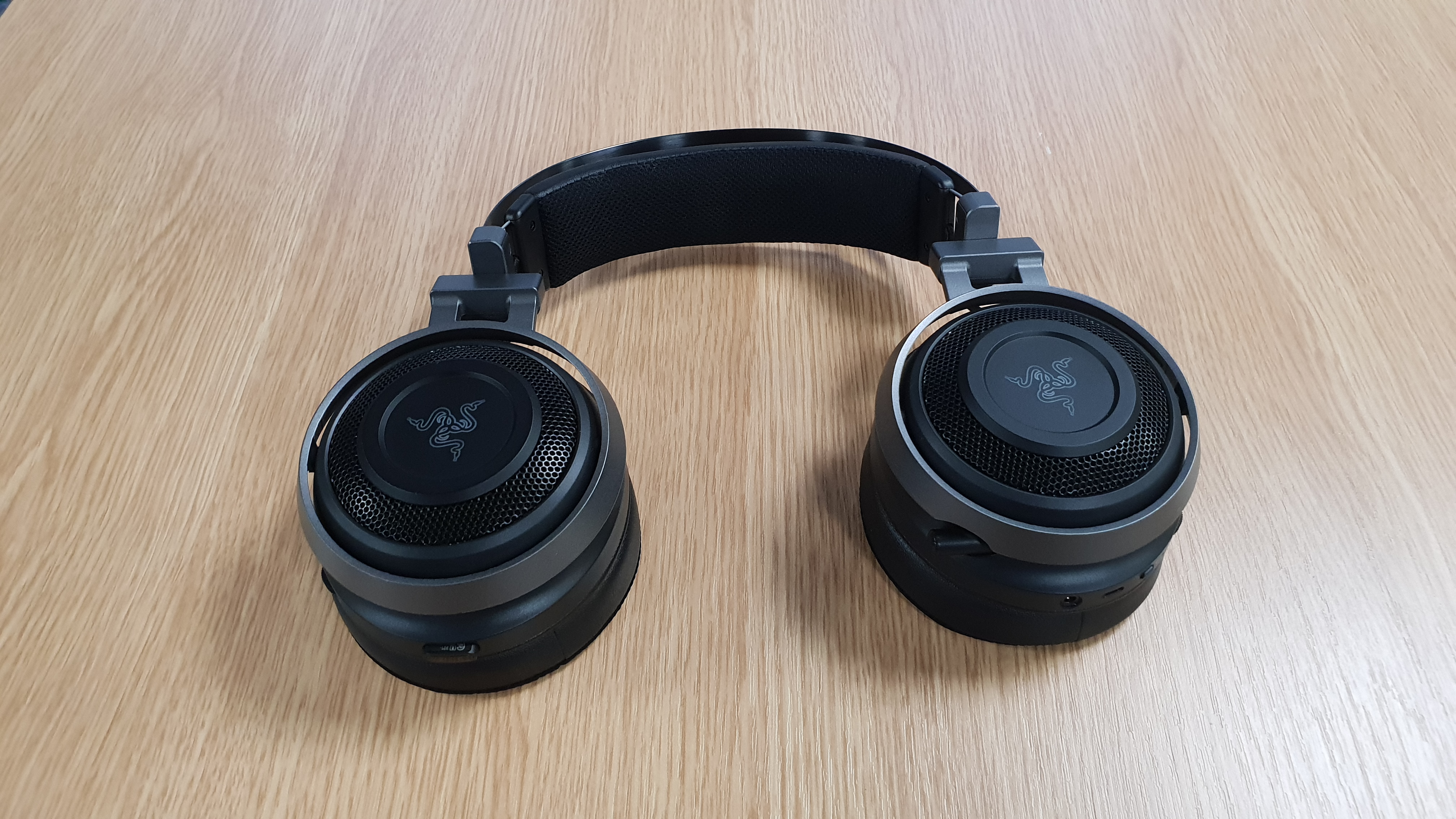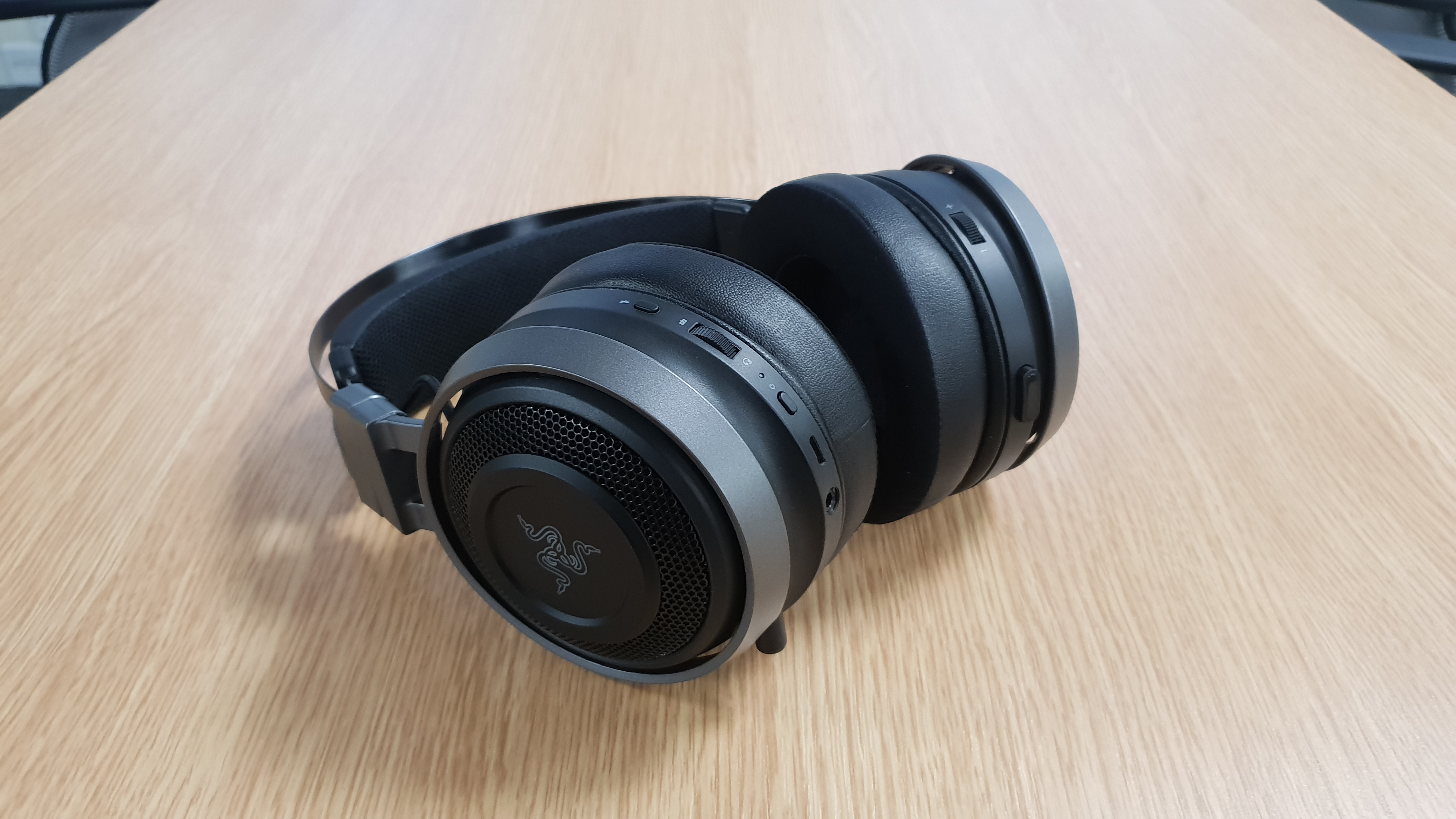TechRadar Verdict
Having haptic feedback reverberating around your brain is going to be one of those things that you either love or hate. The Nari’s are an interesting concept, however we need an off switch.
Pros
- +
Solid soundstage
- +
All connectivity catered for
- +
Plug and Play
- +
Comfortable
Cons
- -
Love/Hate relationship with vibrations
- -
An expensive investment
Why you can trust TechRadar
All good inventions came from those brave enough to step out of the mold, to break from the norm and develop something that us regular folk thought we didn’t need.
After all, why buy a car, when the horse works just as well? What’s the point of a steam train, when you can just go on a canal boat? Why get a mechanical keyboard, when membrane works just fine? You get the point.
You’ve got to break the mold, then convince other folk that what you’re onto is a damn fine idea. Nowhere is this more needed than in the world of peripherals.
Year upon year we see iteration after iteration after iteration of design. Lighter, thinner, slightly more powerful products. One person does something interesting and add lights, suddenly everyone has better lighting.
One manufacturer breaks the mold and invests in good quality drivers, suddenly everyone’s doing it. After all, it’s far easier to hedge your bets on a feature that’s already established than one that’s out there. From a business standpoint nothing’s more desirable than predictable growth, and that’s why things just don’t progress as fast as they should.
Razer on the other hand, seemed to have either forgotten that, or just said, “to hell with it”, and gone and done something nuts anyway. Ladies and gentlemen, we give you the Razer Nari Ultimate. The first gaming headset out there, with vibrating actuators in each ear-cup. Yep, that’s haptic feedback reverberating around your lobes and into your ears and oh boy is it an interesting addition.
How does this gimmicky entry fare against the best PC gaming headsets out there? Read our review to find out.

Price and availability
We’re going to keep this segment short, because, to be fair, there’s not a lot to talk about. It’s $200/£200/AU$250 for these beauties. On the surface at least, that’s a fairly respectable price for a wireless headset with eight hours of battery life.
Not incredible, but impressive. Couple that with all the other features buried in this baby, and it’s actually fairly affordable.
We should note that our initial test sample had an issue turning off the haptic feedback or change the RGB lighting color. Razer informed us this was an issue only with early pre-production units. We have tested these features on final retail models and the issue has been fixed.

Design
Overall the design of the Razer Nari Ultimate isn’t too dissimilar to the Thresher console series, or the now well-established Krakens from yesteryear. So, expect big padded earcups that rest snugly around your lobes, with hidden cooling pads to keep you cool during the hotter months.
On top of that, there’s an aluminum headband frame, to help provide strength, and an auto-adjusting padded headband, to keep the top of your head comfy.
However, the big party pieces are the included connectivity options. You can connect via wireless 2.4 GHz (with the dongle buried in the headset itself for easy access), analogue with the included four pole cable, and you can also connect via USB in a pseudo-wireless wired mode, which allows you to charge and listen to your cans at the same time, as long as the dongle’s still plugged in.
All-in-all a healthy package. It’s a bit bulky, and perhaps a touch heavier than we’d like, but overall the build quality is good.
Drivers are provided to us with two 50mm neodymium magnets, and on the whole you get yourself a nice 8 hour battery life, or 20 hours if you switch off the lighting and haptic feedback (although that functionality doesn’t yet seem to work, at least not on our rigs).

Them haptics
So, let’s talk about the big unique selling point: the haptic feedback, or “HyperSense” as Razer is marketing it as. Provided by Lofelt, a company that specializes in both the hardware and software side of making these babies work.
By default these will work straight out of the box, plug it into your phone, and boom, you’re good to go. Vibrations and all. It’s an odd experience that’s for sure, each driver reacts intuitively to the bass being pumped out by the track, or game environment you’re in.
Slam an Avenger’s shield in World of Warcraft, and you’ll feel it, literally. Hear a tank coming round the corner in Battlefield V, and you can bet hat rumble will frazzle your brain.
It’s an odd experience that's for sure. Sometimes it's like being tickled, sometimes it’s like you can feel your eyes shaking. You’ll either find yourself loving it or hating it.
Performance
As so far as how well they perform? Well it’s a fairly solid affair. You can certainly get headphones with better frequency response, and a stronger soundstage at this price point, but overall you’ll lose out on the other features.
The Razer Nari Ultimate is actually fairly well balanced for a pair of Razer cans, which typically tend to lean more on the side of bass notes than working to secure those mids and trebles.
They’re comfortable too, we had no problem wearing these for a full eight-hour working day, they can be a bit heavy at times, but it’s nothing really to write home about.
One thing we would say is that we wish Razer had spent perhaps a little more time investing in some better dynamic drivers for their more premium options.
The 20Hz - 20kHz range does feel a little bit flat, and when you’ve got the likes of Steelseries, HyperX, and Sennheiser providing some seriously stellar audio solutions at this price point and below, it does deflate just how awesome these things can be. Yes that might add extra cost, but if we’re honest, it’d be worth it.
On top of that, there are niggles we have with the overall design. As they are relatively plug and play, having a hardware switch to disable the HyperSense would make a whole world of sense, especially when you’re plugging in different devices.
It would also be nice to have an option in the Razer Synapse software to control how aggressively the Lofelt L5 drivers responded to the bass (as opposed to just volume adjustment). Fix these three things, and Razer would be on to a winner.
Verdict
There’s an old saying that states “a ship in a harbor is safe, but that is not what ships are built for”, and Razer really has pushed the boat out with this one. That has to be commended, as we’re all a little fed up of iteration after iteration of safe designs.
The Razer Nari Ultimate is an interesting concept, and something that needs to be tried to be believed. Razer’s designed a strong pair of headphones, with a very out-there feature, and although we commend Razer for taking that risk.
However, there are still a few niggles to be ironed out, and we'd like a hardware option to turn off the haptic feedback when we don't feel like having our heads vibrated, rather than having to rely on the Synapse software.
- Don't miss our complete guide to the best Xbox One headsets

Zak is one of TechRadar's multi-faceted freelance tech journalists. He's written for an absolute plethora of tech publications over the years and has worked for Techradar on and off since 2015. Most famously, Zak led Maximum PC as its Editor-in-Chief from 2020 through to the end of 2021, having worked his way up from Staff Writer. Zak currently writes for Maximum PC, TechRadar, PCGamesN, and Trusted Reviews. He also had a stint working as Corsair's Public Relations Specialist in the UK, which has given him a particularly good insight into the inner workings of larger companies in the industry. He left in 2023, coming back to journalism once more. When he's not building PCs, reviewing hardware, or gaming, you can often find Zak working at his local coffee shop as First Barista, or out in the Wye Valley shooting American Flat Bows.
